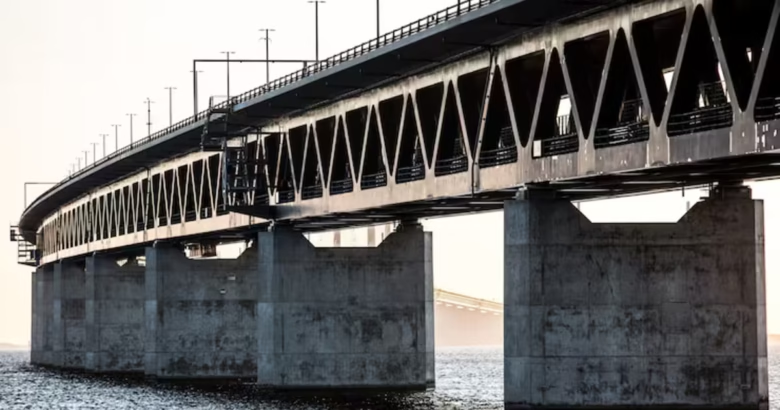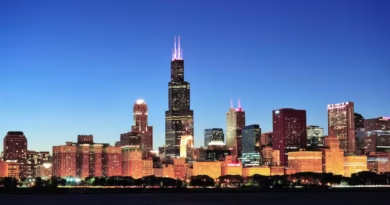Baltimore Bridge Collapse: A Tragic Event That Shook the City

Table of Contents
ToggleIntroduction to the Baltimore Bridge Collapse
A devastating incident that attracted national attention was the collapse of the Baltimore bridge. The transportation infrastructure in Baltimore was affected by this calamity, affecting local companies, residents, and thousands of daily commuters. It generated discussions about how cities should handle their deteriorating infrastructure and caused general apprehension about the safety of bridges and other infrastructure. In addition to causing immediate harm, the fall had a lasting impact on Baltimore’s public safety and economy. Government representatives, engineers, and locals were all compelled by the catastrophe to consider how urgently infrastructure investment and upgrades are needed.
Many people started to wonder about the condition of bridges across the United States after the collapse. Did similar failures threaten other bridges? How may such a disaster have been prevented? An important illustration of how important it is to maintain and improve infrastructure, particularly in quickly expanding urban areas, is the collapse of the Baltimore bridge.
The Devastating Impact on Baltimore’s Infrastructure
Baltimore was instantly affected by the bridge collapse since it caused a disruption to both the local economy and transportation. The city’s logistical and physical foundation was severely damaged when the Baltimore bridge collapsed. Commuters used the bridge to get between important parts of Baltimore, making it one of the busiest routes in the city. Thousands were left stranded or forced to find other ways due to its abrupt breakdown. There were delays in getting to work, school, and other important locations because commuters had to make their way via extremely crowded side streets.
Baltimore was instantly affected by the bridge collapse since it caused a disruption to both the local economy and transportation. The city’s logistical and physical foundation was severely damaged when the Baltimore bridge collapsed. Commuters used the bridge to get between important parts of Baltimore, making it one of the busiest routes in the city. Thousands were left stranded or forced to find other ways due to its abrupt breakdown. There were delays in getting to work, school, and other important locations because commuters had to make their way via extremely crowded side streets.
Furthermore, the breakdown of this crucial piece of infrastructure brought attention to Baltimore’s deteriorating transportation system as a whole. A wider discussion over the state of the city’s roads, bridges, and tunnels was spurred by the collapse. The collapse of the Baltimore bridge served as a reminder to government authorities and city planners that they needed to be more proactive in maintaining and improving infrastructure before more catastrophes happened.
Investigating the Causes of the Collapse
The Baltimore bridge collapse prompted an extensive investigation to understand what led to this tragic failure. Experts pointed to a variety of possible causes. Initially, it was assumed that the collapse might have been due to an overestimate of structural deficiencies. Years of wear and tear, along with large traffic loads, certainly undermined the bridge’s infrastructure. It is possible that structural failures and cracks went unnoticed over time, eventually causing the collapse.
Engineers and safety experts emphasized that regular maintenance and inspections could have identified these weaknesses earlier, preventing the collapse. In fact, it is believed that routine inspections of the bridge had not been rigorous enough, and previous warning signs of deteriorating conditions were not addressed in a timely manner. While there were some repair efforts made in previous years, the lack of major updates to the bridge’s structural integrity may have been a crucial factor in its eventual failure.
Federal and state officials who studied the incident were quick to remind out that there are several bridges across the country in comparable situations. Aging infrastructure is a common issue in many communities, and the Baltimore bridge collapse served as a vivid reminder of how bridges, tunnels, and roadways are often neglected until a calamity strikes. Across the country, the failure also sparked more calls for funding for preventative and infrastructure improvements.
Government Response and Recovery Efforts
Rapid recovery activities were started by both local and federal government agencies in response to the collapse of the Baltimore bridge. Debris removal and traffic flow restoration were the top priorities for Baltimore’s Department of Transportation right away. Temporary bridges were constructed and alternate routes were promptly put into place to temporarily reduce traffic. In order to help commuters get to their destinations, more services were added and public transportation routes were modified to meet the increased demand.
Both federal and state transportation agencies initiated inquiries into the reason of the collapse in addition to these emergency measures. Local engineers collaborated with federal organizations including the National Transportation Safety Board (NTSB) and the Federal Highway Administration (FHWA) to evaluate the structural damage and ascertain whether comparable failures could happen in other parts of Baltimore or the nation. In order to determine whether there were more widespread systemic problems with the way bridges were maintained and observed, the investigation process became essential.
Despite these recovery efforts, the city faced significant challenges in the long term. The collapse of such an important transportation artery created a ripple effect throughout the city. For months after the event, road closures and ongoing construction made commuting even more difficult, frustrating residents and businesses. Baltimore was forced to reexamine its infrastructure management, pushing for larger investments and strategic plans to ensure that bridges and roads were better maintained in the future.
Long-Term Consequences for Baltimore’s Transportation Network
The long-term consequences of the Baltimore bridge collapse stretched far beyond the immediate disruptions. The collapse emphasized the pressing need for updated transportation planning and more sustainable infrastructure solutions. City officials recognized the importance of rebuilding and repairing Baltimore’s transportation network to meet modern demands. The collapse also illuminated the critical necessity of planning for future growth while ensuring that existing infrastructure remained safe and reliable.
One of the primary goals of recovery efforts was to develop more resilient infrastructure that could withstand the increasing strain of traffic. Baltimore began working with engineers to create solutions that incorporated advanced materials and designs aimed at enhancing the durability of new bridges. Additionally, there was an increased focus on making sure that all infrastructure was equipped to handle the evolving demands of the city, particularly with increasing population growth.
Public transit systems also experienced strain due to the Baltimore bridge collapse. With commuters being forced to rely on buses and trains, the pressure on these services grew exponentially. This highlighted the need for additional investments in Baltimore’s public transit system to make it more efficient and capable of handling sudden surges in passengers. Overall, the collapse pushed the city to consider a wide range of transportation solutions, from upgraded highways to more modernized public transportation networks.
National Repercussions and Lessons Learned
The collapse of the Baltimore bridge was a wake-up call for communities nationwide, not just in Baltimore. Numerous cities started examining their own infrastructure more closely, especially the condition of their roadways and bridges. There have been renewed calls for more investment in public works projects as a result of the resurgence of national conversations around infrastructure management and funding.
The accident underlined the necessity for more proactive approaches to infrastructure safety. Across the United States, communities started stepping up inspections, investing in bridge repairs, and committing to more stringent safety standards. In an effort to stop tragedies like the one in Baltimore, federal lawmakers started debating the prospect of boosting funds for infrastructure repair.
Additionally, the Baltimore bridge collapse sparked a greater public awareness about the state of infrastructure. Reforms and increased oversight from local and federal government agencies were demanded by citizens and advocacy groups. This growing public demand for action underscored the necessity of infrastructure, not only for daily comfort, but for the greater health and safety of communities.
Conclusion: Rebuilding for a Safer Future
Additionally, the Baltimore bridge collapse sparked a greater public awareness about the state of infrastructure. Reforms and increased oversight from local and federal government agencies were demanded by citizens and advocacy groups. This growing public demand for action underscored the necessity of infrastructure, not only for daily comfort, but for the greater health and safety of communities.
Looking ahead, the lessons learned from this tragedy will hopefully lead to a future where cities are better equipped to handle the demands of their growing populations. The hope is that by addressing aging infrastructure issues and committing to long-term planning, future disasters can be avoided. The Baltimore bridge collapse may have been a tragedy, but it sparked essential changes that could ultimately make cities across the nation safer and more resilient.





